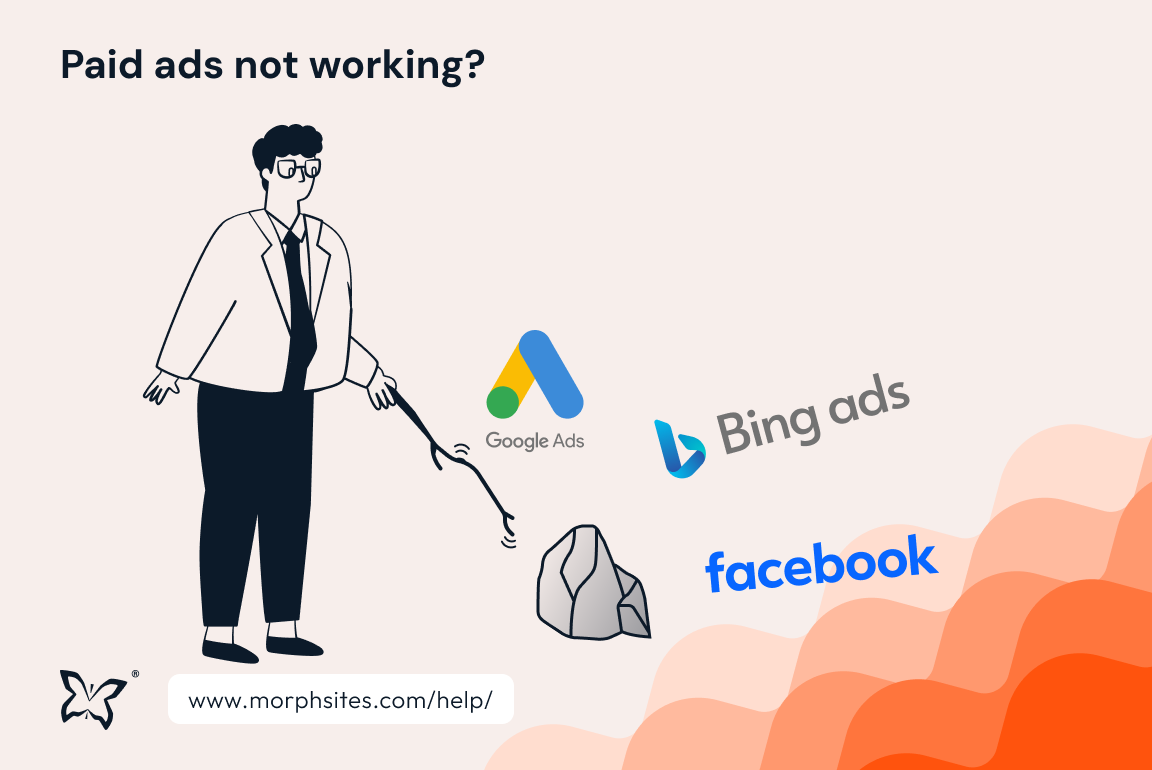We’re taking our meetings online.
We are using a range of online video options so please get in touch to have a chat.

Need expert advice?
Why not give us a call and see how we can help you with your project?
01460 984284We are using a range of online video options so please get in touch to have a chat.

Why not give us a call and see how we can help you with your project?
01460 984284Elevate your business decisions with jargon-free, fact based expert tips and advice

Dan Drummond

We talk to a lot of businesses who’ve tried paid ad campaigns on platforms like Google Ads, Facebook Ads, LinkedIn Ads, and more, and been disappointed with the results. They’ve spent significant money on these campaigns, yet their results have been unimpressive, spammy or poor-quality leads (lots of Gmail rubbish), not enough leads, or no return on investment (ROI) at all.
They've understandably concluded that paid ads just don’t work for their business. Perhaps you've felt the same after some disastrous results?
But before you give up on paid digital advertising altogether, let’s take a closer look at what might have gone wrong and how to fix it.
The truth is, while paid ads aren’t the best fit for every business, they often fail simply because they weren’t set up properly. A successful ad campaign involves more than just throwing money at a platform and hoping for the best. If you want to see a return on investment, you need to do the groundwork.
Here’s what you need to do to give your paid ads a fighting chance:
The first step to a successful ad campaign—whether you’re in B2B or B2C—is understanding your customers. Who are they? What are their pain points? What drives their decisions? For B2C, you’re often dealing with impulses or desires, but in some cases, you’re addressing a specific need. For B2B, the stakes might be higher, but the principle is the same: You need to know what’s important to your audience.
Are your potential customers browsing on LinkedIn, or are they more likely to be searching on Google? Maybe they’re on TikTok or Facebook. The platforms they use can tell you a lot about their behavior and what kind of messaging will resonate with them.
And once you know who they are, ask yourself: What are they worth to your business? Understanding the lifetime value of a customer will help you set realistic goals for your ad spend.
Not all platforms will work well for your product or service—especially when it comes to paid ads. Your audience might be active on multiple platforms, but that doesn’t mean each one is equally effective for reaching them.
For instance, LinkedIn is great for B2B targeting, but even then, not all job titles will respond to the same messaging. What’s important to a CEO might be completely irrelevant to a marketing manager or a procurement director. Your job is to understand those differences and tailor your approach accordingly.
Once you’ve done your research, it’s time to get creative.
Your ads—whether they’re text-based or visually driven—should look great, but more importantly, reflect the insights you’ve gathered about your audience. Do they address your customers’ pain points? Do they tap into the impulses or needs that drive their behaviour?
Remember, you don’t have to (and shouldn’t) cram everything into one ad. Instead, create multiple ads that build up the case over time. Focus on one pain point or benefit per ad to keep your message clear and compelling.
This is where a lot of businesses go wrong, even if they’ve nailed the previous steps. You could have the best ad in the world, but if you send your audience to the wrong page, you’re flushing money down the drain.
A common mistake is sending traffic to your homepage, which is rarely tailored enough to drive conversions. Even worse is sending them to a poorly optimized landing page that doesn’t align with the ad they clicked on. If your landing page doesn’t reinforce the message of your ad and address the pain point it promised to solve, you’ll lose that lead.
Make sure your landing pages are highly relevant to the ad and optimised for conversions. This could mean creating multiple landing pages for different campaigns or audiences.
Finally, even if you’ve done everything right, you won’t know if your campaigns are successful unless you track and measure your results.
Use lead tracking software like morphBI and integrate it with your CRM to monitor the performance of your campaigns. Are you getting quality leads? Are those leads converting into sales? Without this data, you’re flying blind.
Paid ads can be incredibly effective, but only if you take the time to set them up properly. If you’ve tried them before and been disappointed, it might be time to reassess your approach rather than writing them off altogether.
If this sounds like a lot of work (and it is), consider partnering with an agency that follows this end-to-end approach. We’ve helped businesses like yours turn their paid ad campaigns around by following a strategic, well-researched approach. We've literally been there and got the t-shirt. Let’s talk about how we can do the same for you.
Don’t have enough time in the day to do everything yourself?
Why not give us a call and see how we can help you with your project?

Need expert advice?
Let’s talk results
Somerset
The UndercroftLondon
160 Fleet StreetToronto
26 Wellington St East© 2025 morphsites Ltd. All rights reserved E&OE. Registered in England no. 07116238. The ‘morphsites’ wordmark and butterfly device are registered trademarks of morphsites Ltd.